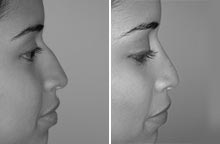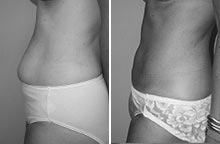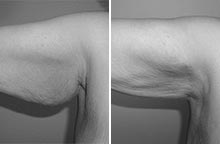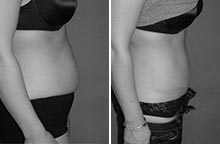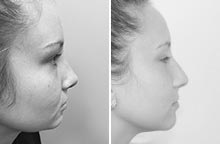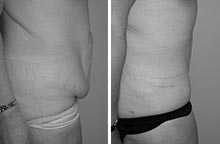FAQ
Contents
- 1 What is plastic surgery?
- 2 Is plastic surgery painful?
- 3 How long will my results last?
- 4 What kind of anesthesia is used?
- 5 Will I be able to breast feed after breast enlargement surgery?
- 6 Are there risks involved in breast augmentation surgery?
- 7 What type of implants do you use for breast augmentation?
- 8 My breasts sag but are not large. What can be done?
- 9 Do the implants have to be changed after several years?
- 10 What if the implant ruptures?
- 11 What is Power Assisted Liposuction?
- 12 I don’t like the tip of my nose. What can I do?
- 13 Am I ready for a face-lift?
- 14 Will I look natural after my surgery?
- 15 When can I go back to work?
- 16 When can I begin to exercise?
- 17 Is there a right age for cosmetic surgery?
What is plastic surgery?
Plastic surgery is a specialty dedicated to the enhancement of the face and body. For those who wish to improve their appearance, cosmetic surgical procedures offer patients the opportunity to reshape physical features and improve their self-esteem.
Is plastic surgery painful?
Patients tolerate postoperative pain in ways that are different from each other. Appropriate pain medications, which minimize discomfort, are prescribed for postoperative patients.
How long will my results last?
There is no precise answer to this question. Surgery does not affect the ongoing aging process which is largely dependent upon genetics. What cosmetic plastic surgery does is turn back the clock. Unfortunately, aging is inevitable. Although with cosmetic surgery, you are able to continue to look more youthful and in shape.
What kind of anesthesia is used?
Our doctors perform surgery under most types of anesthesia: local anesthesia, intravenous sedation (“twilight”), general anesthesia and regional anesthesia (nerve blocks). The method of anesthesia used is based on the patient and surgeon’s preference.
Will I be able to breast feed after breast enlargement surgery?
Yes. Breast augmentation should not affect your ability to breast feed.
Are there risks involved in breast augmentation surgery?
Every surgical procedure entails some risk. Those associated with this type of surgery are infection, changes in the sensitivity of the breast, and scar contracture. These and other complications rarely occur and can usually be avoided. Thousands of women undergo breast augmentation successfully each year and are very satisfied with their outcome.
What type of implants do you use for breast augmentation?
Saline breast implants (filled with sterile saltwater) are available in both a round and teardrop, or anatomic, shape. Silicone-gel filled breast implants are available to women meeting certain criteria, and also come in round and teardrop shape.
My breasts sag but are not large. What can be done?
If the sagging is not severe, a “nipple lift” can be performed. The excess skin is removed after making an incision around the outside of the areola (the pigmented skin around the nipple). The resulting scar is confined to the area where the pigmented skin meets the normal skin at the edge of the areola.
In cases of more severe sagging, a procedure similar to breast reduction may be performed by removing skin only – not breast tissue – to result in a more youthful shape. Breast lifting is an excellent alternative to breast implants for many patients.
Do the implants have to be changed after several years?
No, as long as there are no problems with the implants, they should not have to be replaced. We only use implants that have a warranty for life from the manufacturer.
What if the implant ruptures?
Today’s saline implants are more durable than ever. Although risk of rupture is extremely small, if this should happen, the implant deflates as your body absorbs the saline. There is absolutely no health hazard should this happen. The implant can be easily replaced with minimal discomfort. The breast implants used at David L. Abramson, M.D. have a warranty by the manufacturer and they will usually replace the implants, and give you monies towards the cost of the replacement.
What is Power Assisted Liposuction?
Power assisted liposuction uses a power cannula to facilitate movement in the tissue, whereas the surgeon manually manipulates the cannula in more traditional liposuction procedures. The benefits include less body trauma on the patient, which promotes quicker recovery and faster healing.
I don’t like the tip of my nose. What can I do?
If you like your profile and the tip of your nose is too wide, prominent, projects too much or droops, it can be corrected. Rhinoplasty is an excellent procedure for the nasal tip when it droops with age.
Am I ready for a face-lift?
Skin and facial tissue that sag along with aging can give you an appearance of tiredness or anger even when you are feeling happy and energetic. Jowls and drooping skin around the neck cause you to appear heavy. With facial rejuvenation, you appear rested, healthy and more youthful. The idea is to look better, not different.
Often a mini-lift can be performed instead of a full face-lift. The mini-lift is limited to the lower portion of the face, correcting jowl and neck problems, while the traditional face-lift includes the upper part of the face as well. Some patients opt to combine a face-lift with other procedures, such as eyelid surgery, or skin resurfacing to achieve a full effect.
Will I look natural after my surgery?
The techniques used by our physicians create a natural, non-surgical appearance. Every effort is made to improve your appearance in the most natural view.
When can I go back to work?
The length of time for recuperation after plastic surgery varies depending on the procedure. Most patients will require assistance for the day or so and then will be able to care for themselves. We will discuss with you in detail your postoperative care and recovery instructions. The techniques offered today allow patients to return to work fairly soon following surgery.
When can I begin to exercise?
Depending on the procedure performed determines when a patient may resume physical exercise. All patients are encouraged to start a slow walking routine and hold off on anything more strenuous until after consulting with their doctor.
Is there a right age for cosmetic surgery?
There is no ideal age to have cosmetic surgery. The time to have an elective procedure is when the desired change will justify the time, effort and the cost involved. Another factor to take into consideration is the potential length of time to enjoy the benefits. For example, if an individual has a facelift earlier in life, the rewards of this surgery can be enjoyed for a greater period of time.
